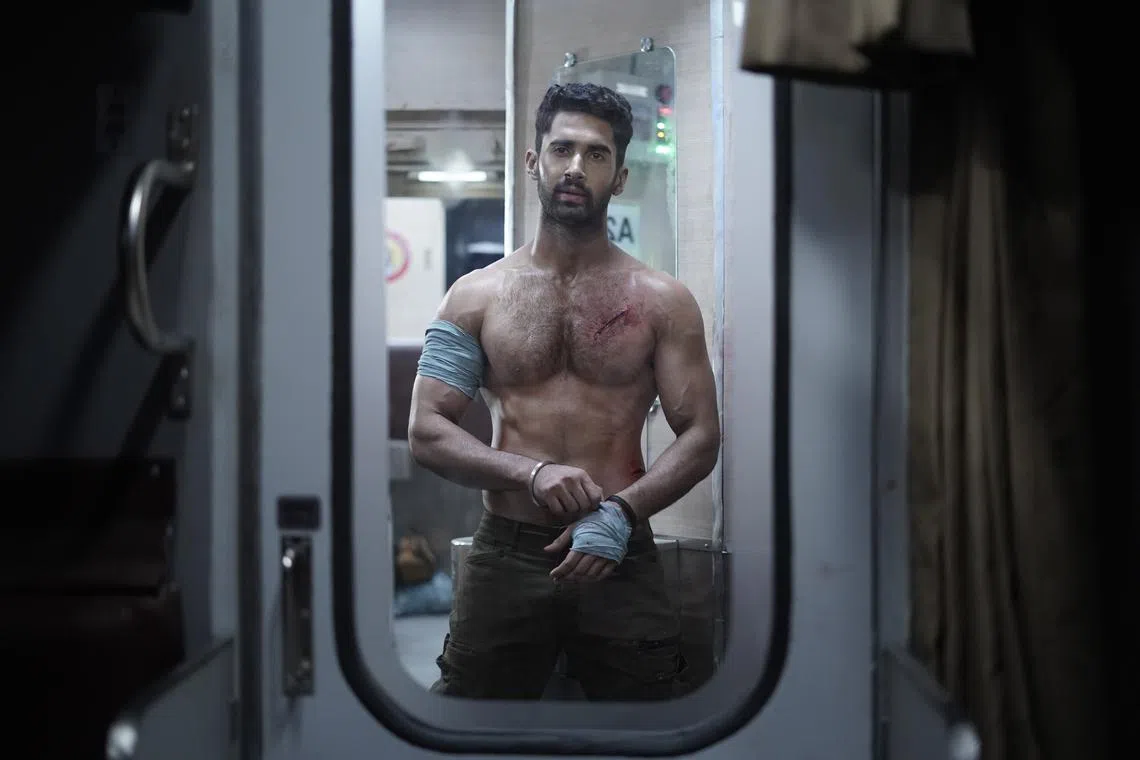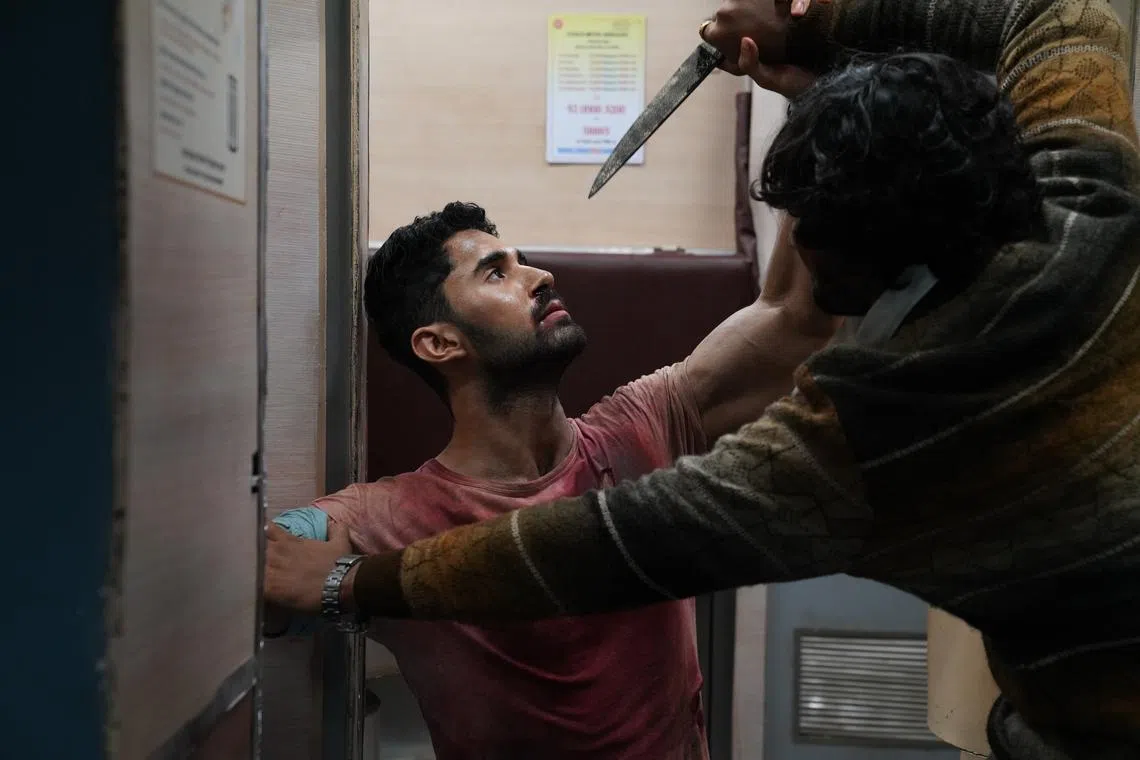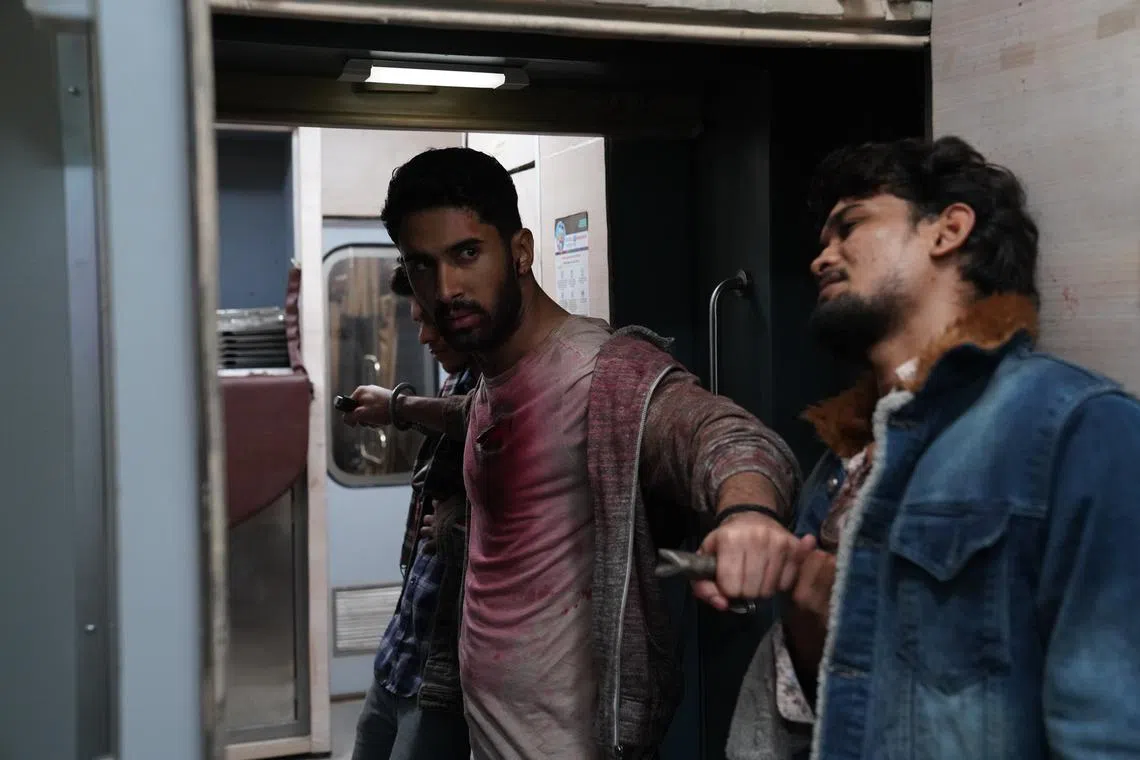How Indian action film Kill slices Bollywood open
Sign up now: Get ST's newsletters delivered to your inbox

Lakshya plays a commando on a mission to save his girlfriend from bandits in Kill.
PHOTO: SHAW ORGANISATION
Follow topic:
NEW YORK – Indian writer-director Nikhil Nagesh Bhat bristles whenever someone labels his claustrophobic action film Kill as Bollywood.
The characters rarely break out in song and there are few colourful sets – just the mundane cars of a train on which the bulk of the Hindi-language movie takes place.
According to Bhat, Kill, which opens in Singapore cinemas on July 18, was inspired by a train robbery he experienced in 1995. That memory is re-spun here into a story involving a lean commando named Amrit (Lakshya), who is working to save his girlfriend Tulika (Tanya Maniktala) from a team of working-class bandits led by the spiteful Fani (Raghav Juyal).
Amrit’s gory, swinging, kicking barrage through tight train corridors – propelled by a muscular exterior yet an emotional vulnerability – is an action extravaganza accomplished through sharp technical execution.
In a Zoom interview, Bhat spoke about crafting fight sequences in tight spaces and his love of Hollywood film-maker James Cameron’s 1986 science-fiction classic Aliens.
How did you shape the fighting styles in Kill?
It comes from the story itself. Amrit is highly trained in commando warfare, which is a kind of martial arts. He is fighting these goons, who are robbers, who do not have any kind of training. They are street fighters. And we trained like that.
We purposely made sure that it looks very raw and visceral, and it looks uncoordinated because the film is very emotional.
I wanted every action sequence to be preceded by some kind of emotional upheaval or turmoil. It could not be one set piece of action after another. It is being driven by the characters and their relationships, which are being tested throughout this journey.
Were there action films that influenced you?

According to Indian writer-director Nikhil Nagesh Bhat, Kill was in fact inspired by a train robbery he experienced in 1995.
PHOTO: SHAW ORGANISATION
Atomic Blonde (2017). I am a huge fan of that film.
But to be honest, because of its emotional shades, I don’t solely look at Kill as an action film. The biggest inspiration was James Cameron’s Aliens (1986). It is a story in which this alien is trying to protect its young ones and Ripley’s trying to protect the kid.
Because the story has been told from Ripley’s point of view, the alien is the antagonist. But if you see it from the alien’s point of view, it is just trying to survive. That was huge. It completely redefined my thought process, especially for this film.
Were you actively working against Bollywood conventions?
The first half of the film has almost a defensive kind of action. It is not something that is visceral. Only in the second half does that reaction change because of Amrit’s mental health and his emotional state.
I wanted to be away from the Bollywood kind of action because I don’t conform to that kind of style. It is not what I would want to communicate or do because the moment that kind of action happens, the believability of the story goes for a toss.
How did you build these claustrophobic train sets?

Amrit’s (played by Lakshya, left) gory, swinging, kicking barrage through tight train corridors is an action extravaganza accomplished through sharp technical execution.
PHOTO: SHAW ORGANISATION
When we started to build a set, the only thing I knew was that I wanted it to be absolutely adaptive. So I wanted each and every wall to move and to be flexible. We worked on it for almost nine months.
First, we created a miniature set. Then we made a set of around 3m with wood. Finally, we made a set with two coach cars. There were hydraulics, pulleys and people pushing and pulling walls. The set was almost like Transformers. It could just collapse and come back together when my camera was moving.
The set was cramped. There was no place for lights to be put in. So we used the service lights for the set. My director of photography (Rafey Mehmood) constructed a panel on the roof through which an overhead dolly could capture everything.
Because the action is close combat and it is such a personal story, I changed to wide-angle lenses because I had to capture each emotion and each body movement. The set was so cramped only one department could work at any one point. That took a lot of time.
The moments of grieving here by men are rare for an action film. What inspired that?
With the young people, we have tried to give them a lot of emotional vulnerability because I feel like in today’s generation, we as men, we are very emotionally sensitive. This is an intimate story about loss, whose emotions come in the form of rage and guilt and grief. Because the idea that people like Amrit, people with lots of muscles, are very hard on the outside and do not communicate – that is not the reality.
With the antagonists, I wanted people to feel for them too. As the bandits start losing people, they cry and they feel the same kind of emotion the protagonists were feeling in the first half of the film. In that way, I wanted the audience to rethink who to root for. NYTIMES
Kill opens in Singapore cinemas on July 18.

